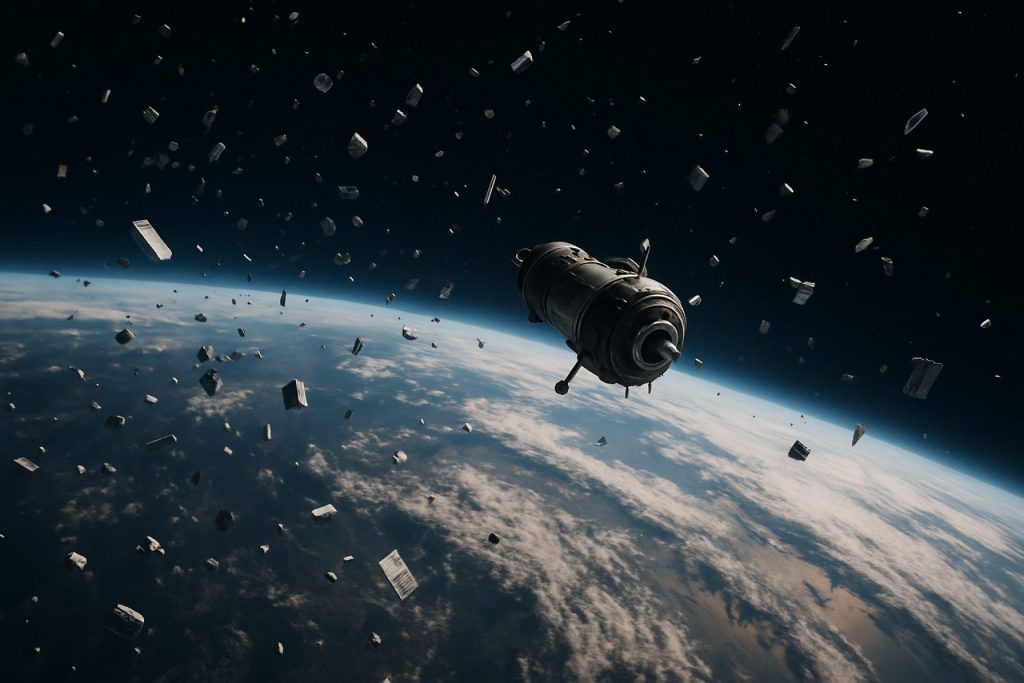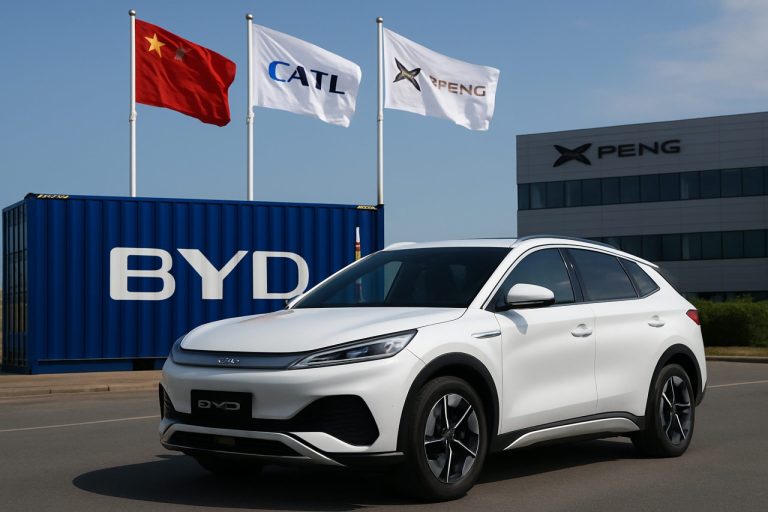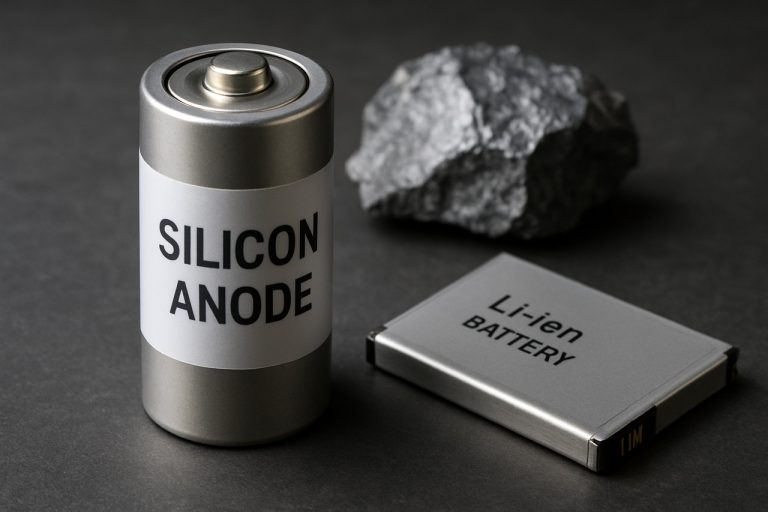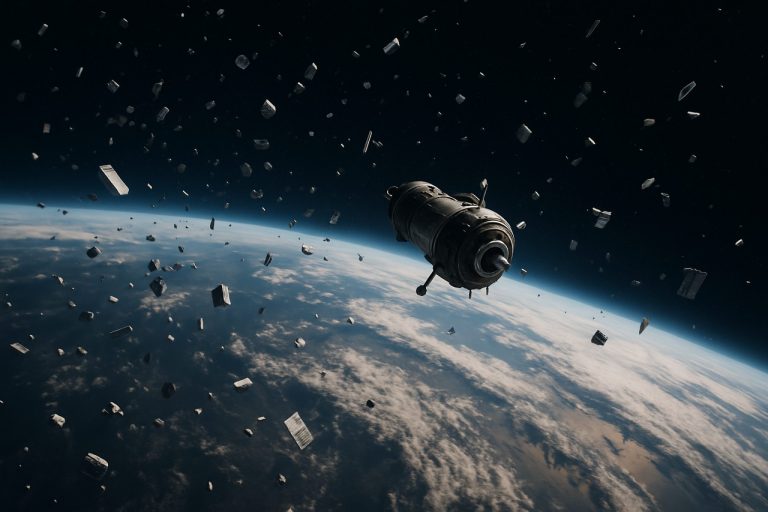
Space Law and Orbital Debris Mitigation Services in 2025: Navigating Legal Frontiers and Accelerating Solutions for a Safer Orbit. Explore the Rapid Evolution, Regulatory Shifts, and Market Opportunities Shaping the Next Era of Space Sustainability.
- Executive Summary: 2025 Market Outlook and Key Drivers
- Global Regulatory Landscape: Evolving Space Law and Policy
- Market Size, Segmentation, and 2025–2030 Growth Forecasts
- Key Players and Industry Initiatives (e.g., Astroscale, ESA, NASA)
- Technological Innovations in Debris Detection and Removal
- Legal Challenges: Liability, Insurance, and International Treaties
- Commercialization: Business Models and Service Offerings
- Case Studies: Active Debris Removal Missions and Partnerships
- Future Outlook: Sustainability, New Entrants, and Policy Trends
- Recommendations: Strategic Actions for Stakeholders in 2025 and Beyond
- Sources & References
Executive Summary: 2025 Market Outlook and Key Drivers
The market for space law and orbital debris mitigation services is poised for significant evolution in 2025, driven by the rapid expansion of satellite constellations, heightened regulatory scrutiny, and the urgent need to address the growing threat of space debris. As of early 2025, there are over 9,000 active satellites in orbit, with projections indicating this number could double within the next five years due to mega-constellation deployments by commercial operators and national agencies. This surge has intensified concerns over orbital congestion and collision risks, prompting both governmental and private sector initiatives to develop and implement robust debris mitigation strategies.
Key regulatory developments are shaping the landscape. The United Nations Committee on the Peaceful Uses of Outer Space (COPUOS) continues to refine international guidelines, while national agencies such as the National Aeronautics and Space Administration (NASA) and the European Space Agency (ESA) are updating their debris mitigation standards and compliance requirements. In the United States, the Federal Communications Commission (FCC) has introduced stricter rules mandating satellite operators to deorbit defunct satellites within five years of mission completion, accelerating the demand for end-of-life and active debris removal services.
The commercial sector is responding with innovative solutions. Companies like Astroscale Holdings Inc. are pioneering active debris removal missions, with demonstration projects scheduled for 2025 and beyond. Astroscale’s ELSA-M mission aims to capture and deorbit multiple defunct satellites, setting a precedent for commercial debris removal services. Similarly, ClearSpace SA, in partnership with ESA, is preparing for the ClearSpace-1 mission, targeting the removal of a large debris object from low Earth orbit in the coming years. These missions are expected to validate technical approaches and business models for debris mitigation, catalyzing further investment and regulatory support.
Insurance providers and satellite manufacturers are also integrating debris mitigation into their risk assessments and design processes. Leading manufacturers such as Airbus Defence and Space and Thales Alenia Space are incorporating end-of-life deorbiting technologies and collision avoidance systems into new satellite platforms, aligning with evolving legal and insurance requirements.
Looking ahead, the interplay between regulatory frameworks, technological innovation, and commercial incentives will be the primary driver of market growth. The next few years will likely see the emergence of standardized legal protocols, increased public-private partnerships, and a maturing ecosystem of service providers dedicated to ensuring the long-term sustainability of the orbital environment.
Global Regulatory Landscape: Evolving Space Law and Policy
The global regulatory landscape for space law and orbital debris mitigation is undergoing significant transformation as the number of satellites and space missions continues to rise sharply in 2025. The proliferation of commercial satellite constellations, particularly in low Earth orbit (LEO), has intensified concerns about space debris and the long-term sustainability of the orbital environment. In response, national and international regulatory bodies are updating frameworks and introducing new guidelines to address these challenges.
The United Nations Office for Outer Space Affairs (UNOOSA) remains central to international coordination, promoting the implementation of the 21 Guidelines for the Long-term Sustainability of Outer Space Activities, which encourage best practices for debris mitigation, collision avoidance, and information sharing. The International Telecommunication Union (ITU) also plays a key role by regulating radiofrequency spectrum and orbital slots, increasingly requiring operators to submit debris mitigation plans as part of licensing.
In the United States, the Federal Communications Commission (FCC) has enacted new rules, effective from 2024, mandating that operators of satellites in LEO must deorbit their spacecraft within five years of mission completion—down from the previous 25-year guideline. This regulatory tightening is expected to influence global standards, as many commercial operators seek access to the U.S. market. The National Aeronautics and Space Administration (NASA) continues to update its own debris mitigation requirements for missions it funds or collaborates on, and is actively supporting the development of active debris removal (ADR) technologies.
The European Union is advancing its own regulatory agenda through the proposed EU Space Law, which is expected to introduce binding debris mitigation requirements for all EU-based operators by 2025-2026. The European Space Agency (ESA) is also a leader in debris mitigation, supporting projects such as ClearSpace-1, the world’s first mission to remove a piece of debris from orbit, scheduled for launch in 2026. ESA’s Clean Space initiative is driving the adoption of “design for demise” and end-of-life disposal standards across European industry.
Japan’s Japan Aerospace Exploration Agency (JAXA) and other national agencies in Canada, India, and Australia are similarly updating national regulations and collaborating on international debris tracking and removal efforts. Meanwhile, private sector companies such as Northrop Grumman and Astroscale are developing commercial debris removal and satellite servicing solutions, often in partnership with government agencies.
Looking ahead, the next few years will likely see the emergence of more harmonized global standards, increased enforcement of debris mitigation requirements, and the integration of active debris removal services into regulatory frameworks. As the commercial space sector expands, regulatory clarity and international cooperation will be critical to ensuring the long-term sustainability of space activities.
Market Size, Segmentation, and 2025–2030 Growth Forecasts
The market for space law and orbital debris mitigation services is rapidly evolving in response to the exponential growth in satellite launches and the increasing congestion of low Earth orbit (LEO). As of 2025, the number of active satellites has surpassed 8,000, with projections indicating continued acceleration due to large-scale constellations from operators such as Space Exploration Technologies Corp. (SpaceX) and OneWeb. This surge has heightened the urgency for robust legal frameworks and commercial solutions to address the mounting risks posed by space debris.
Market segmentation within this sector can be broadly categorized into legal advisory and compliance services, active debris removal (ADR) technologies, end-of-life (EOL) deorbiting solutions, and tracking/monitoring services. Legal and regulatory compliance is a foundational segment, with specialized law firms and consultancies guiding satellite operators through evolving international and national regulations, such as the United Nations Outer Space Treaty and guidelines from the United Nations Office for Outer Space Affairs (UNOOSA). Meanwhile, ADR and EOL services are being pioneered by companies like Astroscale Holdings Inc., which is developing magnetic capture and deorbiting technologies, and ClearSpace SA, which is contracted for the European Space Agency’s first debris removal mission.
From 2025 to 2030, the market is expected to experience robust growth, driven by both regulatory mandates and commercial demand. The European Union’s Space Law, set to be enforced in the coming years, will require satellite operators to demonstrate compliance with debris mitigation standards, further fueling demand for legal and technical services. The U.S. Federal Communications Commission (FCC) has also adopted new rules requiring satellite operators to deorbit LEO satellites within five years of mission completion, accelerating the need for EOL solutions.
Industry forecasts suggest that the global market for orbital debris mitigation services could reach several billion dollars by 2030, with annual growth rates in the double digits. The proliferation of mega-constellations, coupled with increasing insurance requirements and liability concerns, is expected to drive sustained investment in both legal and technical mitigation services. Key players such as Northrop Grumman Corporation and Airbus S.A.S. are also entering the market, leveraging their expertise in satellite servicing and space situational awareness.
- Legal advisory and compliance services: Growing in importance as national and international regulations tighten.
- Active debris removal: Early commercial contracts and demonstration missions underway, with scaling expected post-2025.
- End-of-life and deorbiting solutions: Becoming standard for new satellite deployments, especially in LEO.
- Tracking and monitoring: Enhanced by partnerships with government agencies and private firms, improving collision avoidance capabilities.
Overall, the outlook for 2025–2030 is characterized by rapid market expansion, increased regulatory oversight, and the emergence of a competitive ecosystem of legal and technical service providers dedicated to ensuring the long-term sustainability of space activities.
Key Players and Industry Initiatives (e.g., Astroscale, ESA, NASA)
The rapid expansion of satellite constellations and commercial space activities has intensified the focus on space law and orbital debris mitigation services in 2025. Key players in this sector include government agencies, international organizations, and pioneering private companies, each contributing to the evolving regulatory and operational landscape.
Among the most prominent private actors is Astroscale Holdings Inc., a Japan-based company specializing in on-orbit servicing and debris removal. Astroscale’s ELSA-d mission, launched in 2021, demonstrated core technologies for capturing and deorbiting defunct satellites, and the company continues to develop commercial debris removal services. In 2025, Astroscale is advancing its ELSA-M mission, which aims to service multiple client satellites in a single mission, reflecting the growing demand for scalable debris mitigation solutions.
On the governmental side, the European Space Agency (ESA) remains a leader in debris mitigation policy and technology. ESA’s Clean Space initiative and the upcoming ClearSpace-1 mission, scheduled for launch in 2026, are designed to actively remove large debris objects from orbit. ESA also collaborates with industry and international partners to develop guidelines and best practices for debris mitigation, supporting the implementation of the Space Debris Mitigation Guidelines of the United Nations Committee on the Peaceful Uses of Outer Space (UNCOPUOS).
The National Aeronautics and Space Administration (NASA) continues to play a pivotal role in both research and policy. NASA’s Orbital Debris Program Office provides critical data and modeling, and the agency enforces stringent debris mitigation requirements for all U.S. missions. In 2024, NASA updated its procedural requirements (NPR 8715.6B) to further reduce the creation of new debris, and it is actively supporting the development of active debris removal technologies through partnerships and funding opportunities.
Other notable contributors include Northrop Grumman Corporation, which has demonstrated on-orbit servicing with its Mission Extension Vehicle, and LeoLabs, Inc., which operates a global network of radars to track debris and provide collision avoidance services. These companies are integral to the commercial ecosystem supporting debris mitigation and space situational awareness.
Looking ahead, the next few years are expected to see increased regulatory harmonization, with agencies such as ESA and NASA working alongside private industry to establish enforceable standards. The proliferation of debris mitigation services, coupled with advances in tracking and removal technologies, is likely to shape a more sustainable orbital environment as satellite launches continue to accelerate.
Technological Innovations in Debris Detection and Removal
The rapid expansion of satellite constellations and commercial space activities has intensified the urgency for technological innovation in orbital debris detection and removal. As of 2025, the number of active satellites in low Earth orbit (LEO) has surpassed 8,000, with projections indicating continued exponential growth due to mega-constellations for broadband and Earth observation. This surge has heightened the risk of collisions and cascading debris events, prompting both regulatory and technological responses.
Key players in the sector are advancing detection capabilities through ground-based radar, optical telescopes, and space-based sensors. Leonardo S.p.A. and Lockheed Martin Corporation are among the companies operating advanced radar networks capable of tracking objects as small as a few centimeters. These systems are critical for cataloging debris and issuing collision warnings to satellite operators. Meanwhile, Northrop Grumman Corporation is developing space-based sensors to enhance real-time situational awareness, a crucial step for both avoidance and removal missions.
On the removal front, several demonstration missions are underway or planned for the near future. Astroscale Holdings Inc., a pioneer in end-of-life and active debris removal services, has conducted multiple in-orbit demonstrations, including magnetic capture and controlled deorbiting of defunct satellites. Their ELSA-d mission, completed in 2023, validated technologies for rendezvous, capture, and safe disposal, setting the stage for commercial debris removal services in 2025 and beyond. Similarly, ClearSpace SA, in partnership with the European Space Agency, is preparing for the ClearSpace-1 mission, targeting the removal of a large debris object from LEO in the coming years.
Technological innovation is also being driven by evolving space law and regulatory frameworks. The United Nations Committee on the Peaceful Uses of Outer Space (COPUOS) and national agencies such as the U.S. Federal Communications Commission are tightening requirements for post-mission disposal and debris mitigation. These regulations are spurring investment in technologies like autonomous navigation, robotic arms, and propulsion systems for deorbiting, as seen in the product lines of Airbus Defence and Space and Thales Group.
Looking ahead, the next few years will see increased collaboration between commercial operators, government agencies, and international bodies to standardize debris mitigation practices and accelerate the deployment of innovative detection and removal solutions. The convergence of legal mandates and technological advances is expected to make active debris removal a routine part of space operations by the late 2020s.
Legal Challenges: Liability, Insurance, and International Treaties
The rapid expansion of commercial and governmental activities in Earth orbit has intensified legal scrutiny around liability, insurance, and international treaties governing space operations, particularly as they relate to orbital debris mitigation. As of 2025, the legal framework is primarily anchored in the 1972 Liability Convention and the 1967 Outer Space Treaty, which establish that launching states bear international responsibility and liability for damage caused by their space objects. However, these treaties predate the current era of mega-constellations and active debris removal, creating significant legal ambiguities.
A key challenge is the attribution of liability in multi-actor scenarios, such as collisions involving debris from defunct satellites or third-party removal services. The Liability Convention holds the launching state liable, but with the rise of private operators and cross-border partnerships, determining the responsible party is increasingly complex. For example, companies like Astroscale Holdings Inc. and ClearSpace SA are pioneering active debris removal missions, often in collaboration with national space agencies. These partnerships necessitate detailed contractual arrangements to allocate liability and indemnification, especially when debris removal involves objects owned by multiple entities or states.
Insurance markets are adapting to these new risks. Traditional space insurance has focused on launch and in-orbit operations, but insurers are now developing products to cover liabilities arising from debris mitigation activities. The involvement of companies such as Northrop Grumman Corporation—which is developing servicing and debris removal technologies—has prompted underwriters to reassess risk models, particularly for missions involving proximity operations or the manipulation of non-cooperative targets. The lack of historical data on active debris removal increases uncertainty, leading to higher premiums and more stringent policy exclusions.
Internationally, the United Nations Committee on the Peaceful Uses of Outer Space (COPUOS) continues to promote non-binding guidelines for debris mitigation, but there is growing momentum for more robust, enforceable standards. The European Space Agency (ESA) and national regulators are moving toward mandatory debris mitigation requirements for licensed missions, including end-of-life disposal and post-mission passivation. These regulatory trends are expected to influence global best practices and may be incorporated into future treaty revisions or new multilateral agreements.
Looking ahead, the legal landscape for orbital debris mitigation services will likely see increased harmonization of national regulations, the emergence of standardized contractual frameworks for liability allocation, and the evolution of insurance products tailored to the unique risks of debris removal. However, the absence of binding international rules and the technical challenges of attribution and enforcement will remain significant hurdles in the near term.
Commercialization: Business Models and Service Offerings
The rapid expansion of commercial space activities in 2025 has intensified the focus on space law and the development of orbital debris mitigation services. As the number of satellites in low Earth orbit (LEO) surpasses 8,000, driven by mega-constellations and small satellite launches, the risk of collisions and the proliferation of space debris have become critical concerns for both regulators and industry stakeholders. This environment is catalyzing new business models and service offerings centered on compliance, active debris removal, and end-of-life management.
Internationally, the legal framework for space debris mitigation is anchored by the United Nations’ Outer Space Treaty and the Space Debris Mitigation Guidelines of the Committee on the Peaceful Uses of Outer Space (COPUOS). However, these guidelines are non-binding, prompting national agencies such as the U.S. Federal Communications Commission (FCC) and the European Space Agency (ESA) to implement stricter licensing requirements and debris mitigation standards. In 2024, the FCC adopted new rules mandating that operators of satellites in LEO must deorbit their spacecraft within five years of mission completion, accelerating demand for compliance solutions.
Commercial service providers are responding with a range of offerings. Companies like Astroscale Holdings Inc. are pioneering active debris removal (ADR) missions, with their ELSA-d demonstration in 2021 and subsequent commercial contracts for end-of-life and debris capture services. Astroscale’s business model includes both direct debris removal and on-orbit servicing, such as life extension and relocation, targeting satellite operators seeking to comply with emerging regulations and reduce liability risks.
Similarly, ClearSpace SA, a Swiss company, is advancing toward the world’s first commercial debris removal mission, ClearSpace-1, scheduled for launch in the mid-2020s. Their approach involves contracting with government agencies and private operators to remove defunct satellites, with a focus on scalable, repeatable missions. These companies are also exploring “debris as a service” subscription models, where operators pay recurring fees for ongoing compliance and risk mitigation.
In parallel, satellite manufacturers and launch providers are integrating debris mitigation technologies, such as propulsion systems for controlled deorbit and standardized grappling fixtures for future removal. Northrop Grumman Corporation has demonstrated on-orbit servicing with its Mission Extension Vehicle (MEV), offering life extension and repositioning services that help reduce the creation of new debris.
Looking ahead, the commercialization of debris mitigation is expected to accelerate as regulatory pressure mounts and insurance underwriters increasingly require compliance with best practices. The next few years will likely see the emergence of new partnerships between satellite operators, insurers, and debris removal firms, as well as the development of market-based incentives for responsible behavior in orbit. The evolution of space law and the growth of orbital debris mitigation services are thus becoming central pillars of the sustainable commercialization of space.
Case Studies: Active Debris Removal Missions and Partnerships
The rapid proliferation of satellites and space debris in low Earth orbit (LEO) has intensified the need for active debris removal (ADR) missions and robust international partnerships. As of 2025, several pioneering case studies illustrate the intersection of space law, commercial innovation, and multinational collaboration in orbital debris mitigation.
One of the most prominent ADR missions is the ELSA-d (End-of-Life Services by Astroscale-demonstration) project, led by Astroscale Holdings Inc.. Launched in 2021, ELSA-d demonstrated key technologies for rendezvous, capture, and controlled deorbiting of defunct satellites. Building on this, Astroscale is preparing for follow-on missions in 2025 and beyond, including the ELSA-M mission, which aims to service multiple client satellites in a single flight. Astroscale’s work is notable for its close collaboration with national space agencies and compliance with evolving debris mitigation guidelines, such as those set by the United Nations Office for Outer Space Affairs (UNOOSA).
Another significant initiative is the ClearSpace-1 mission, spearheaded by ClearSpace SA in partnership with the European Space Agency (ESA). Scheduled for launch in 2026, ClearSpace-1 will attempt to capture and deorbit a large, non-cooperative debris object from LEO. This mission is a direct response to ESA’s “Zero Debris” policy, which aims to ensure that all ESA missions are debris-neutral by 2030. The project exemplifies how public-private partnerships are shaping the future of debris removal, with ESA providing funding and regulatory oversight, while ClearSpace develops the technical solution.
In the United States, Northrop Grumman Corporation has advanced the field with its Mission Extension Vehicle (MEV) program. While primarily focused on satellite servicing, the MEV’s successful docking and life-extension operations for commercial satellites have laid the groundwork for future debris removal applications. Northrop Grumman’s ongoing collaboration with the National Aeronautics and Space Administration (NASA) and commercial operators highlights the growing role of U.S. industry in shaping debris mitigation standards and practices.
These case studies underscore the critical role of legal frameworks and international cooperation. The 2025 outlook suggests that as ADR missions transition from demonstration to operational phases, compliance with international space law—particularly the Outer Space Treaty and national licensing regimes—will be essential. The emergence of commercial debris removal services, supported by agencies like ESA and NASA, signals a shift toward a more sustainable and regulated orbital environment in the coming years.
Future Outlook: Sustainability, New Entrants, and Policy Trends
As the global space economy accelerates into 2025, the intersection of space law and orbital debris mitigation services is becoming increasingly critical for the sustainability of near-Earth operations. The proliferation of satellites—driven by mega-constellations from commercial actors—has heightened the urgency for robust legal frameworks and innovative debris management solutions. According to the European Space Agency, over 36,000 trackable pieces of debris larger than 10 cm currently orbit Earth, with millions of smaller fragments posing collision risks to operational spacecraft.
In response, regulatory bodies and industry leaders are advancing both policy and technology. The United Nations Committee on the Peaceful Uses of Outer Space (COPUOS) continues to refine guidelines for the long-term sustainability of outer space activities, emphasizing debris mitigation and remediation. National agencies, such as the National Aeronautics and Space Administration (NASA) and Japan Aerospace Exploration Agency (JAXA), are updating their licensing requirements to mandate end-of-life disposal plans and post-mission passivation for new satellites.
On the commercial front, new entrants and established aerospace firms are developing active debris removal (ADR) and in-orbit servicing technologies. Astroscale Holdings Inc., a pioneer in ADR, is preparing for further demonstration missions in 2025, building on its ELSA-d and ELSA-M programs, which aim to capture and deorbit defunct satellites and upper stages. Similarly, ClearSpace SA is advancing its first debris removal mission, ClearSpace-1, under contract with the European Space Agency, targeting launch readiness in the coming years.
Policy trends are also shifting toward greater international coordination and the potential for binding agreements. The G7 and other multilateral forums have called for standardized debris mitigation practices and transparency in satellite operations. Meanwhile, insurance providers are beginning to factor debris mitigation compliance into coverage terms, incentivizing operators to adopt best practices.
Looking ahead, the next few years will likely see the emergence of a more regulated and service-oriented orbital environment. The convergence of legal mandates, market-driven debris removal services, and technological innovation is expected to foster a more sustainable space ecosystem. As new entrants join established players, the sector will continue to evolve, with policy and commercial solutions working in tandem to address the growing challenge of orbital debris.
Recommendations: Strategic Actions for Stakeholders in 2025 and Beyond
As the proliferation of satellites and space activities accelerates in 2025 and beyond, stakeholders across the space sector must adopt proactive strategies to address the mounting challenges of orbital debris and evolving space law. The following recommendations are tailored for governments, commercial operators, and service providers to ensure sustainable space operations and compliance with emerging legal frameworks.
- Prioritize Compliance with International Guidelines: Stakeholders should align their operations with the latest guidelines from the United Nations Office for Outer Space Affairs (UNOOSA) and the European Space Agency (ESA), which emphasize post-mission disposal, collision avoidance, and debris mitigation. Adhering to these standards not only reduces legal risk but also demonstrates responsible stewardship.
- Engage in Active Debris Removal (ADR) Partnerships: With the first commercial ADR missions scheduled for 2025–2027, such as those by Astroscale Holdings Inc. and ClearSpace SA, satellite operators should consider collaborative agreements for end-of-life servicing and debris removal. Early engagement can secure priority access to these services and help shape industry best practices.
- Integrate Debris Mitigation into Satellite Design: Manufacturers and operators should incorporate de-orbiting technologies, propulsion for controlled re-entry, and modular designs to facilitate future servicing. Companies like Northrop Grumman Corporation are advancing on-orbit servicing capabilities, setting a precedent for design standards that support debris mitigation.
- Advocate for Clear National Legislation: National space agencies and industry groups should work with legislators to update licensing, liability, and insurance requirements in line with the rapid growth of commercial space activities. This includes clarifying responsibilities for debris generated by private actors and ensuring alignment with international treaties.
- Invest in Space Situational Awareness (SSA): Operators should leverage SSA data from organizations such as LeoLabs, Inc. and Exotrail to enhance collision avoidance and operational planning. Real-time tracking and predictive analytics are critical for both compliance and risk management.
- Participate in Industry Consortia and Standardization Efforts: Stakeholders should join initiatives led by bodies like the Inter-Agency Space Debris Coordination Committee (IADC) to contribute to the development of technical standards and share best practices, fostering a unified approach to debris mitigation.
By implementing these strategic actions, stakeholders can not only mitigate legal and operational risks but also contribute to the long-term sustainability of the orbital environment as the space economy enters a new era of growth and complexity.
Sources & References
- National Aeronautics and Space Administration
- European Space Agency
- Airbus Defence and Space
- Thales Alenia Space
- United Nations Office for Outer Space Affairs
- International Telecommunication Union
- Japan Aerospace Exploration Agency
- Northrop Grumman
- European Space Agency (ESA)
- National Aeronautics and Space Administration (NASA)
- Northrop Grumman Corporation
- Leonardo S.p.A.
- Lockheed Martin Corporation
- LeoLabs, Inc.
- Exotrail



